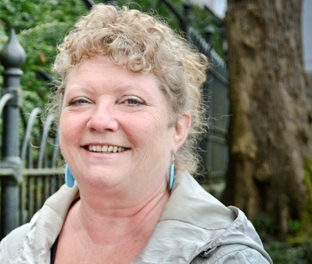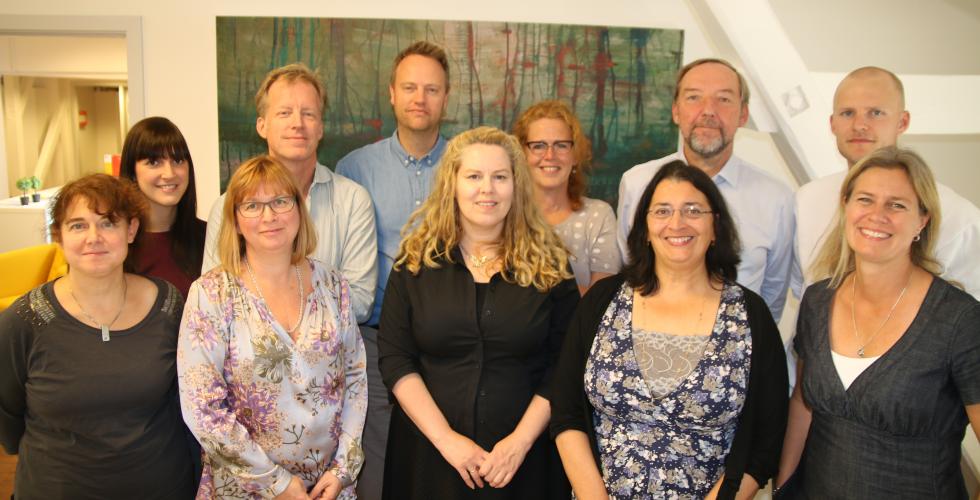Gender equality work both praised and criticized
The KIF Committee’s strategy for its work with gender balance and ethnic diversity in research up to 2017 has been completed. Feedback from the sector shows that the institutions appreciate the committee’s active role, but they would like a clearer definition of “ethnic diversity”.
In late summer 2014, the KIF Committee was given a new mandate that expanded its activities to include diversity as well as gender balance. The committee itself has had the main responsibility for forging a path for its work within this broader area of responsibility, and the strategy for the current period (2014 –2017) has now been completed.
The mandate from the Ministry of Education and Research states that the committee’s most important task in this period is to work with gender and ethnicity, and the strategy therefore focuses on these two dimensions. According to the strategy document, the knowledge base for gender balance efforts is much better than for ethnic diversity. There is a large body of research on gender balance, relatively good statistics are available, and a wide variety of measures have already been tested out.
Similar knowledge is not available about ethnic diversity, which is why the committee will give priority to acquiring this knowledge in the current period instead of implementing measures.
“Statistics can be misleading”
Lars Holden is Chair of the Association of Norwegian Research Institutes, the special interest organisation for all Norwegian research institutes receiving basic funding from the Research Council. He thinks the KIF Committee’s strategy makes many good points, and he is pleased that the committee will be proactive and put an emphasis on institutional visits and information. But he has some critical comments as well.
“With regard to gender, it’s important to compare the same age groups. If it has long been difficult for women to achieve senior-level positions, it will not be an optimal use of the overall talent pool to give priority to women in the upcoming period, as it seems the committee does when you look at the underlying numbers. It would be best to have the fairest distribution in all age groups. This is why recruitment to senior-level positions should be based on statistics about the recruitment pool and not on the current distribution of senior-level positions. This is the result of a 20- to 30-year-old policy, and says very little about today’s policy. Many of the statistics referred to in the strategy are not relevant for current policy,” he argues.
According to the strategy document, the greatest challenges lie at the higher levels in the career pathway at the institutions, and the committee will therefore focus on gender balance and ethnic diversity from the post-doctoral level up to the professor level.
Holden supports the committee’s desire for better data on ethnic diversity, but he points out that the strategy’s discussion of ethnic diversity is unclear, especially with regard to the effect of international recruitment to research.
“Today there are many people from outside Norway being recruited to research positions in both the higher education sector and the research institute sector. In fact, there is very little recruitment from the ethnic Norwegian population in a number of fields. It may be an equally large problem, then, that some academic environments have very few ethnic Norwegian employees, which means that the staff is not sufficiently diverse. Many ethnic minorities in Norway are probably overrepresented in many research environments, but they are recruited from abroad and not through the Norwegian educational system. Since they are primarily men, this also affects the gender balance. We see this clearly in the statistics for doctoral degrees in recent years,” says Holden.
May point out blind spots
The University of Stavanger (UiS) will prioritize gender balance efforts in the future, and will use the KIF Committee as an advisory body for their work. This is according to Vibeke Hervik Bull, the project manager for the BALANSE project titled “Women to the top – UiS in motion and balance”.
“We recently received a grant of NOK 4 million from the Research Council’s BALANSE programme to improve the gender balance in senior-level positions, and we regard KIF as an important resource for our work. In other words, UiS will focus primarily on gender balance in the coming years, but we believe that knowledge about any barriers and measures related to structures and leadership changes may also be relevant for ethnic diversity,” she says.
UiS recruits a relatively large number of international researchers, and finds that they are well integrated in the institution. But Bull does not discount that there may be problems related to internationalization which they themselves are not aware of. For this reason, she is positive about the KIF Committee’s initiative to improve the knowledge base on ethnic diversity in academia.
“We think the committee’s expanded mandate may help to place the problem on the agenda, including at our university,” says Hervik Bull.
Confusing term
Vice Rector Hanne S. Hansen of Nord-Trøndelag University College thinks it is positive that the committee now includes diversity in its work, but she is also concerned that the term “ethnic diversity” may be confusing.
“Ethnic diversity can be interpreted in different ways. For example, it may refer to recruitment of researchers from abroad, which is widespread in our sector. But if we are talking about ethnic minorities, then we are referring to our own population – the strategy mentions minority groups such as Sami, Kvens, Jews and the like.”
Nord-Trøndelag University College has the national responsibility for the Southern Sami language and culture, and Hansen says that it is not easy to find a sufficient number of candidates at higher levels in this field.
“With regard to ethnic minorities, we are dependent on finding candidates with doctoral degrees, and this is not something you can change in two years. It takes more time. Our work with the Southern Sami language and culture is hindered because we have a problem getting enough higher level candidates. Another issue is that not enough potential candidates view academia as an interesting place to work. This is a problem both for the Sami minority and for academia.”
Hansen would therefore like to see the strategy incorporate a more inclusive view of research.
“I think, for example, that action-based research and follow-up research that involve others besides academics could be beneficial in many subject areas. It would also lead to greater diversity. But then academic qualifications cannot be the only thing that counts.”
However, she thinks that the committee has made a good start, and she is pleased that the measures mentioned in the strategy are concrete.
“The objectives, such as more women in senior-level positions, are not something the committee can achieve by itself. The responsibility rests on the institutions. This is why institutional visits are important. Long-term measures are needed, so I don’t think this strategy will lead to any sudden revolution. The most important thing is that we have a committee that can keep the pressure on, point out problem areas, and ask the institutions: ‘Have you thought about this?’”.

Need targeted measures
Gender Equality Adviser Anne Marit Skarsbø of the University of Bergen (UiB) is generally positive about the expanded mandate.
“The risk of multiple discrimination – in other words, that several forms of discrimination are present simultaneously and intensify or counteract each other – means that the institutions must be aware of both gender and ethnicity at the same time. I know many people are concerned that the gender equality efforts will suffer when we also have to work with diversity, but we don’t know this for certain. It remains to be seen whether we can stay focused on both aspects. By the same token, I notice that it’s easier to gain legitimacy for including ethnic diversity in the discussion than when we only talk about gender equality. That’s unfortunate, and it indicates how much work we have ahead of us with gender equality in academia,” she says.
However, Skarsbø thinks that the various groups included in the concept of “ethnic diversity” – international employees, people with an immigrant background, and ethnic minorities with a long history in Norway – face completely different challenges.
“In our experience, international employees represent the greatest challenge for the academic leadership. Internationalization is a focus area which has nothing to do with gender equality, but which is critical for research quality – we want to recruit the most talented researchers. But international recruitment is not easy by any means. Cultural differences may lead to misunderstandings and conflict, and we must think through potential problems. Integrating international employees socially in the workplace requires active leadership.”

Must be open to change
Petter Aaslestad, President of the Norwegian Association of Researchers, thinks that a reasonable degree of gender balance is important for quality in the academic environments.
“It’s positive that the committee looks at measures that can help to achieve this,” he says.
But Aaslestad is concerned that the committee’s expanded mandate may hurt efforts to improve the gender balance.
“We’re afraid that the gender perspective will fade into the background if the committee doesn’t receive enough funding to handle both of these large tasks. It’s also important to assess the situation along the way and be open to change if it turns out that the expanded mandate is not helping to improve gender equality in academia,” he says.
Translated by Connie Stultz.
Main challenges:
- Lack of women in senior-levels positions in academia
- Lack of gender balance in higher education and research
- Low recruitment of ethnic minorities in higher education and research
- Insufficient use of gender and diversity perspectives in research
Primary objective:
- Achieve gender balance and increase ethnic diversity in research and higher education
Secondary objectives:
- Increase knowledge about ethnic diversity
- Increase the percentage of ethnic minorities in education and research
- Strengthen the diversity perspective in research
- Increase the percentage of women in senior-level positions
- Decrease gender segregation
- Strengthen the gender perspective in research
Measures:
- Institutional visits
- Conferences and seminars
- Advisement
- Leadership training
- Information (kifinfo.no)
- Studies of ethnic diversity
- Development of a certification scheme for the sector

